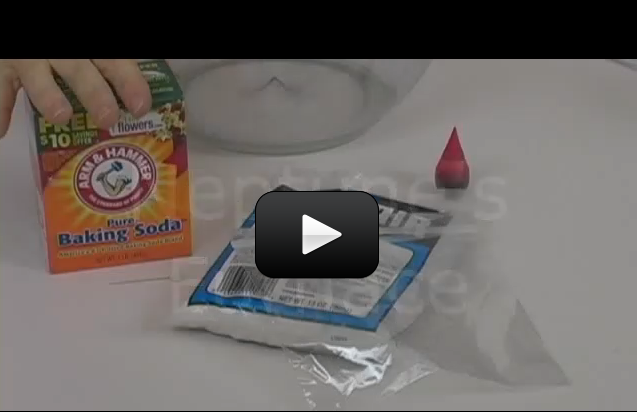We’re going to do a chemistry experiment to simulate the heat generated by the internal core of Neptune by using a substance used for melting snow mixed with baking soda.
Calcium chloride splits into calcium ions and chloride ions when it is mixed with water, and energy is released in the form of heat. The energy released comes from the bond energy of the calcium chloride atoms, and is actually electromagnetic energy. When the calcium ions and chloride ions are floating around in the warm solution, they are free to interact with the rest of the ingredients added, like the sodium bicarbonate, to form carbon dioxide gas and sodium chloride (table salt).
Materials
- Calcium chloride
- Sodium bicarbonate (baking soda)
- Phenol red or red food dye
- Re-sealable plastic baggie
- Gallon milk jug container
- Straight pin
- Warm water
- Cold water


The first estimate of Neptune’s temperature comes from measuring the energy coming off the planet. This is similar to the infrared camera that they use at doctor’s offices to take a person’s temperature across the room. Voyager 2 gave us a close look at Neptune back in 1989. However, we hope to send a probe into Neptune’s atmosphere someday so we can have really accurate measurements of the planet’s temperature.
Calcium Chloride is hygroscopic. This means it can attract and absorb water. This compound causes extreme dryness if it comes in contact with skin. In extreme causes, it can cause skin burns.
“How do we know how hot Neptune gets?” -Nik, age 10
“Why is Calcium Chloride so dangerous for our skin?” -Ian, age 8
Yes absolutely!
Will food grade Calcium Chloride work for this experiment?